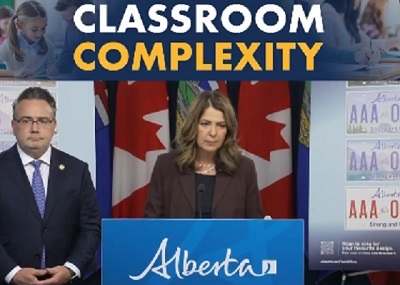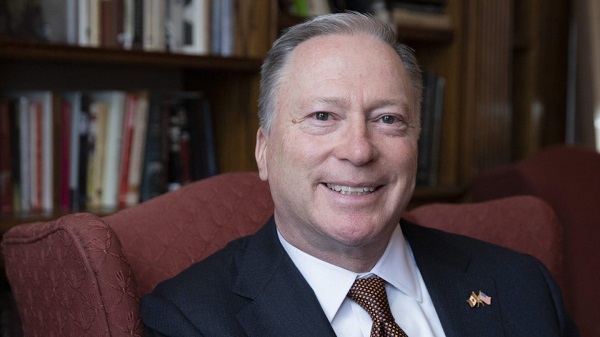Alberta
Crown seeking a 22 1/2-year sentence in appeal of Edmonton sexual assault case
By Angela Amato in Edmonton
A Crown prosecutor says a former club promoter who was convicted of sexually assaulting five women over six years should receive an additional 15 years to his sentence because he planned his attacks.
Matthew McKnight, who is 2 1/2 years into his eight-year sentence, was convicted in 2020 for the assaults that happened in Edmonton between 2010 and 2016.
Crown prosecutor Matthew Griener told the Court of Appeal that McKnight should receive 22 1/2 years because he was premeditative in offering women free alcohol at the bars where he was working before he took them home and assaulted them.
“It’s not a case about casual sex,” Griener told the court Tuesday. “It’s a case about serial rape.”
Griener argued that McKnight’s sentence should be longer because the assaults happened on different days with different women and should be recognized as separate sentences to be served consecutively.
“Each one was an isolated offence, not a spree,” Griener said.
McKnight’s lawyer, Peter Sankoff, told the court that his client accepts the blame for the assaults and has been taking sexual wellness classes. He added that the progress McKnight has made in prison should be taken into consideration.
Sankoff also argued that while McKnight did give the women alcohol, the assaults were not premeditated. The lawyer said two of the assaults met the criteria for being planned.
In January, the Supreme Court of Canada dismissed a defence appeal for a new trial for McKnight. In that appeal, Sankoff argued the Crown used sarcasm and inflammatory language during cross-examination during the trial.
McKnight was an event promoter for Urban Sparq Hospitality and worked at several bars and clubs across the city.
Court heard that he offered alcohol to the victims, who were between the ages of 18 and 22, then assaulted them at his downtown apartment.
Griener said the women testified that when they regained consciousness, they didn’t know where they were and had no memory of how they got there. No evidence of drugging or drug use was found by the court.
“They were made vulnerable by the perpetrator,” Griener said.
The court said it would make a written decision at a later date.
This report by The Canadian Press was first published Feb. 14, 2023.
Alberta
Alberta taxpayers should know how much their municipal governments spend

From the Fraser Institute
By Tegan Hill and Austin Thompson
Next week, voters across Alberta will go to the polls to elect their local governments. Of course, while the issues vary depending on the city, town or district, all municipal governments spend taxpayer money.
And according to a recent study, Grande Prairie County and Red Deer County were among Alberta’s highest-spending municipalities (on a per-person basis) in 2023 (the latest year of comparable data). Kara Westerlund, president of the Rural Municipalities of Alberta, said that’s no surprise—arguing that it’s expensive to serve a small number of residents spread over large areas.
That challenge is real. In rural areas, fewer people share the cost of roads, parks and emergency services. But high spending isn’t inevitable. Some rural municipalities managed to spend far less, demonstrating that local choices about what services to provide, and how to deliver them, matter.
Consider the contrast in spending levels among rural counties. In 2023, Grande Prairie County and Red Deer County spent $5,413 and $4,619 per person, respectively. Foothills County, by comparison, spent just $2,570 per person. All three counties have relatively low population densities (fewer than seven residents per square kilometre) yet their per-person spending varies widely. (In case you’re wondering, Calgary spent $3,144 and Edmonton spent $3,241.)
Some of that variation reflects differences in the cost of similar services. For example, all three counties provide fire protection but in 2023 this service cost $56.95 per person in Grande Prairie County, $38.51 in Red Deer County and $10.32 in Foothills County. Other spending differences reflect not just how much is spent, but whether a service is offered at all. For instance, in 2023 Grande Prairie County recorded $46,283 in daycare spending, while Red Deer County and Foothills County had none.
Put simply, population density alone simply doesn’t explain why some municipalities spend more than others. Much depends on the choices municipal governments make and how efficiently they deliver services.
Westerlund also dismissed comparisons showing that some counties spend more per person than nearby towns and cities, calling them “apples to oranges.” It’s true that rural municipalities and cities differ—but that doesn’t make comparisons meaningless. After all, whether apples are a good deal depends on the price of other fruit, and a savvy shopper might switch to oranges if they offer better value. In the same way, comparing municipal spending—across all types of communities—helps Albertans judge whether they get good value for their tax dollars.
Every municipality offers a different mix of services and those choices come with different price tags. Consider three nearby municipalities: in 2023, Rockyview County spent $3,419 per person, Calgary spent $3,144 and Airdrie spent $2,187. These differences reflect real trade-offs in the scope, quality and cost of local services. Albertans should decide for themselves which mix of local services best suits their needs—but they can’t do that without clear data on what those services actually cost.
A big municipal tax bill isn’t an inevitable consequence of rural living. How much gets spent in each Alberta municipality depends greatly on the choices made by the mayors, reeves and councillors Albertans will elect next week. And for Albertans to determine whether or not they get good value for their local tax dollars, they must know how much their municipality is spending.
Alberta
Premier Smith addresses the most important issue facing Alberta teachers: Classroom Complexity

Premier Danielle Smith is posting this response to a media question about Classroom Complexity.
While Albertans are hearing a lot about capping class sizes, Premier Smith says it might be a much better idea to talk about capping “complexity”.
The challenges teachers face in today’s classrooms are recognized, and work continues toward practical solutions that address their concerns.
Achieving a fair and reasonable agreement that best supports students remains a top priority. pic.twitter.com/o4UCt7sDoU
— Danielle Smith (@ABDanielleSmith) October 16, 2025
-

 International2 days ago
International2 days agoNumber of young people identifying as ‘transgender’ declines sharply: report
-

 Alberta2 days ago
Alberta2 days agoThe Technical Pitfalls and Political Perils of “Decarbonized” Oil
-

 National1 day ago
National1 day agoDemocracy Watch Renews Push for Independent Prosecutor in SNC-Lavalin Case
-

 Health2 days ago
Health2 days agoColorado gave over 500 people assisted suicide drugs solely for eating disorders in 2024
-

 Alberta2 days ago
Alberta2 days agoEnbridge CEO says ‘there’s a good reason’ for Alberta to champion new oil pipeline
-

 Alberta22 hours ago
Alberta22 hours agoClick here to help choose Alberta’s new licence plate design
-

 Censorship Industrial Complex2 days ago
Censorship Industrial Complex2 days agoCanada’s privacy commissioner says he was not consulted on bill to ban dissidents from internet
-

 Bruce Dowbiggin2 days ago
Bruce Dowbiggin2 days agoLong-Distance Field Goals Have Flipped The Field. Will The NFL Panic?







